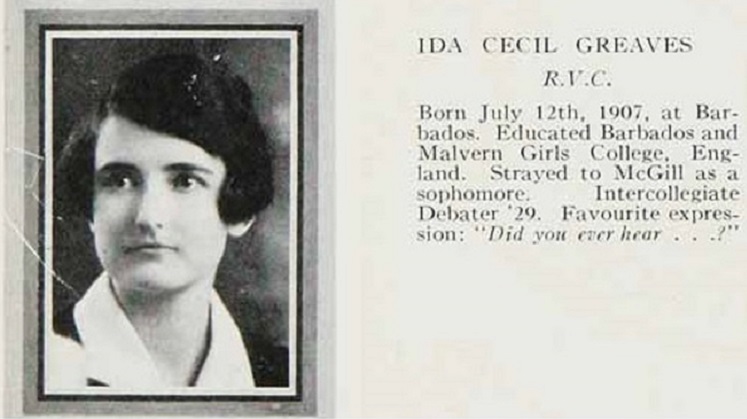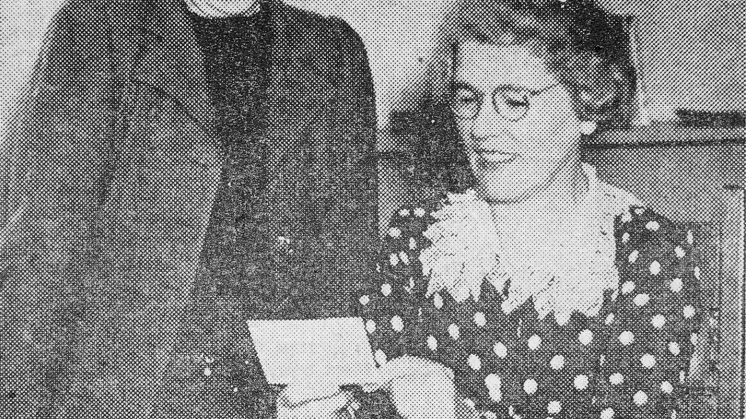With origins in the 1866 Women’s Suffrage Committee, the Women’s Library officially opened in 1926 and has been housed at LSE since 2013. LSE Library curator Dr Gillian Murphy shares its history.
The Women’s Library was officially opened as the Women’s Service Library in 1926 by the London and National Society for Women’s Service. Vera Douie was its first full-time librarian. Vera was born in Lahore in 1894 to a wealthy Anglo-Indian family but she renounced her family and insisted on living in London on a small librarian’s wage.
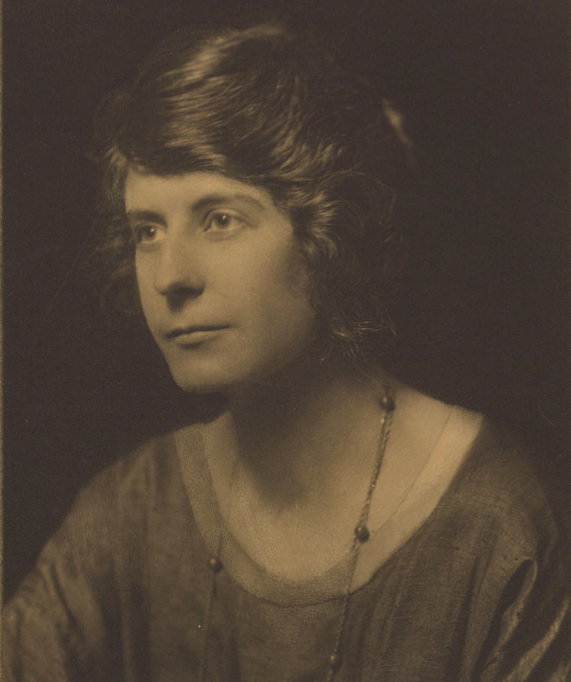
The origins of the London Society, and of its Library, developed from the Women’s Suffrage Committee founded in London in 1866. The Library was for its members but was open to non-members for a fee. This letter in The Woman’s Leader (5 August 1927) gives information about the type of material it contained in those early days, specialising particularly in women’s employment and other matters relating to women as citizens.
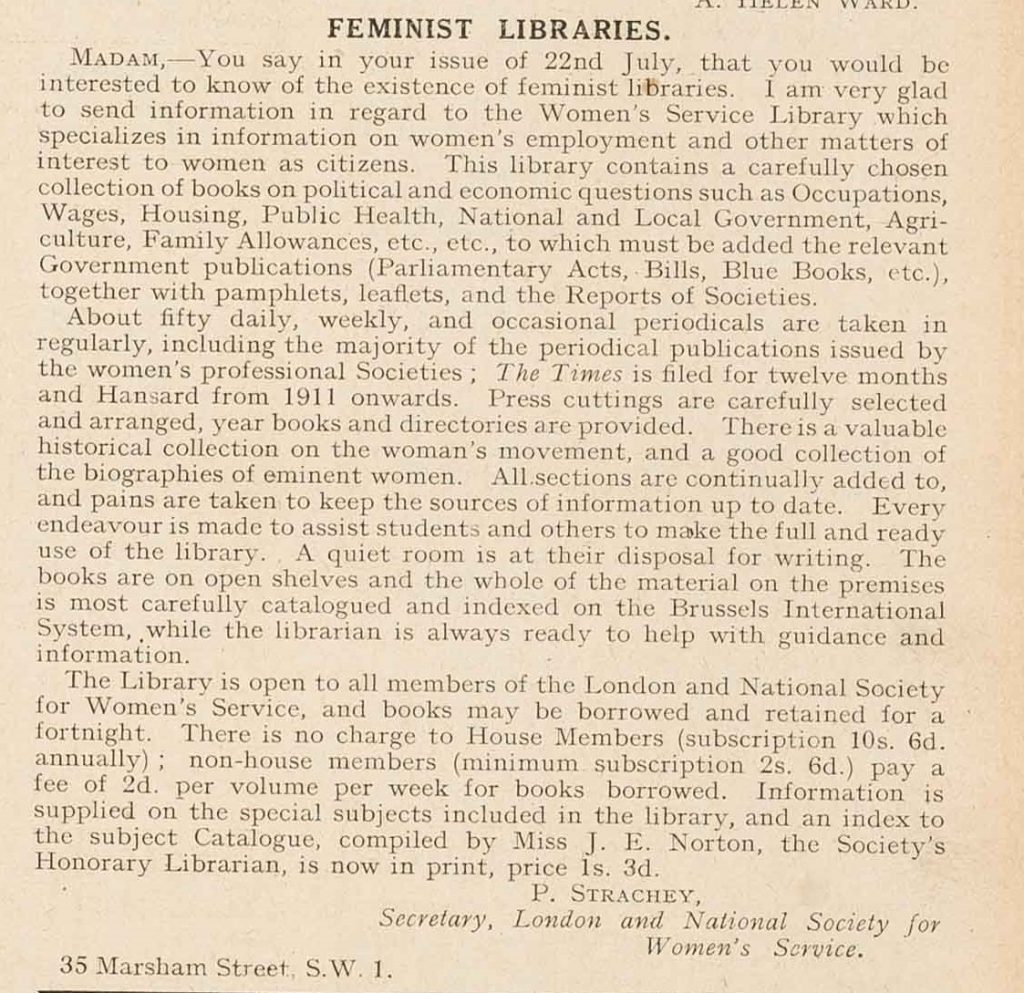
The collection was built by donation. Letters were written to members and to authors inviting them to donate their books. This proved successful. However, in 1928, when George Bernard Shaw refused to donate The Intelligent Women’s Guide to Socialism, Capitalism, Sovietism and Fascism, Vera Douie sold his letter for 15 shillings so that she could buy the book. This event was noted in the Library sub-committee minutes and even reported in the Daily Mail with the headline “Mr Shaw outwitted”.
The Library was housed at 35-37 Marsham Street, Westminster, a converted pub, known as Women’s Service House. It also had a restaurant, a committee room and a hall for lectures and theatre performances.
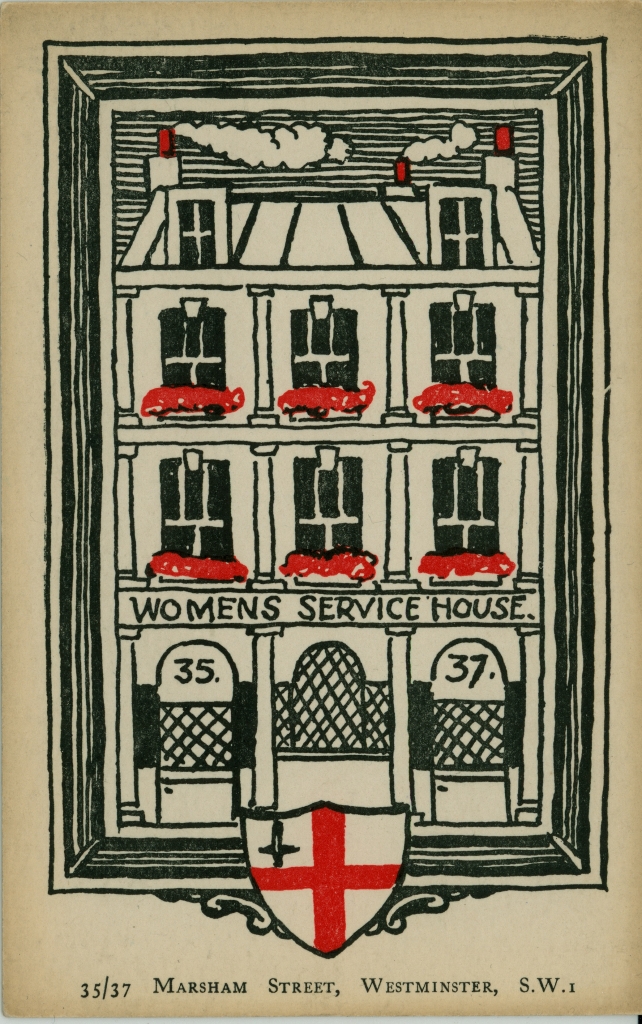
Women’s Service House became an active centre for those involved in the women’s movement. An example of this is a dinner to celebrate Elisabeth Scott winning the architectural competition to design the Shakespeare Memorial Theatre in Stratford-Upon-Avon. In this image Elisabeth Scott is standing in the back row (5th from left – image is also interesting for the books on the shelves).
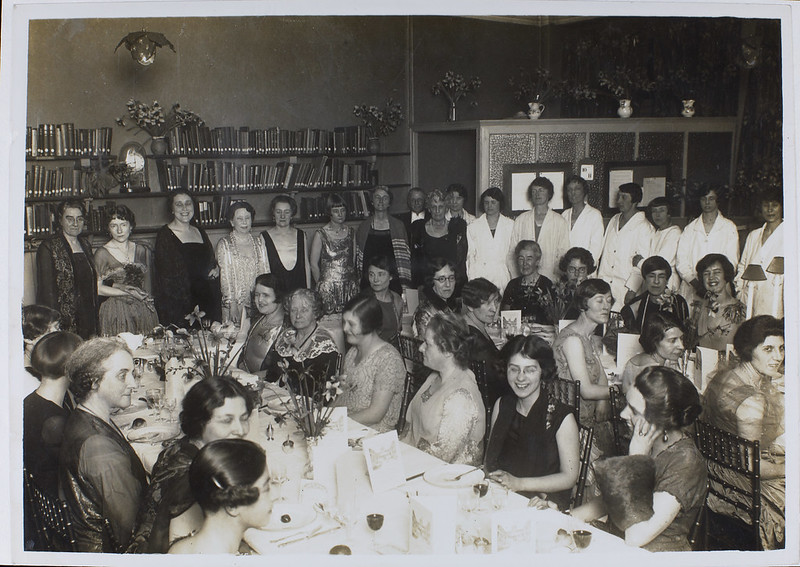
In 1929, Millicent Garrett Fawcett laid the foundation stone for a new building at 29 Marsham Street. This opened in 1931 as Millicent Fawcett Hall and the expanding library moved there.
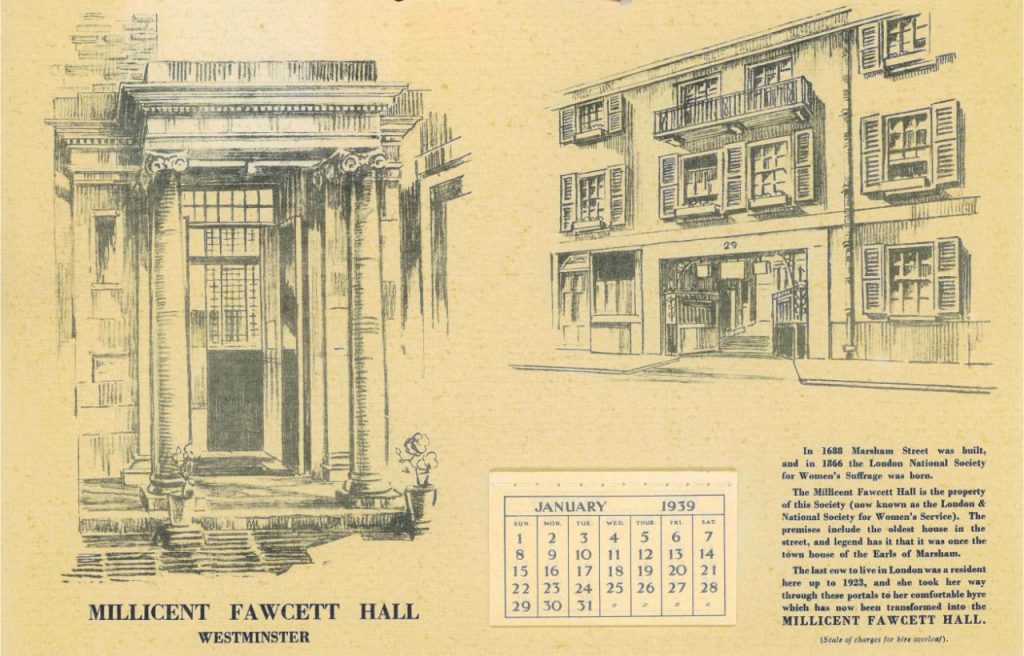
The Library attracted many prominent feminists as members such as Virginia Woolf and Vera Brittain. Virginia used the collection to research a book which became Three Guineas, published in 1938. Virginia became a member of the London Society, gave talks to the Junior Council, and donated many books to the Library as noted in the annual reports.
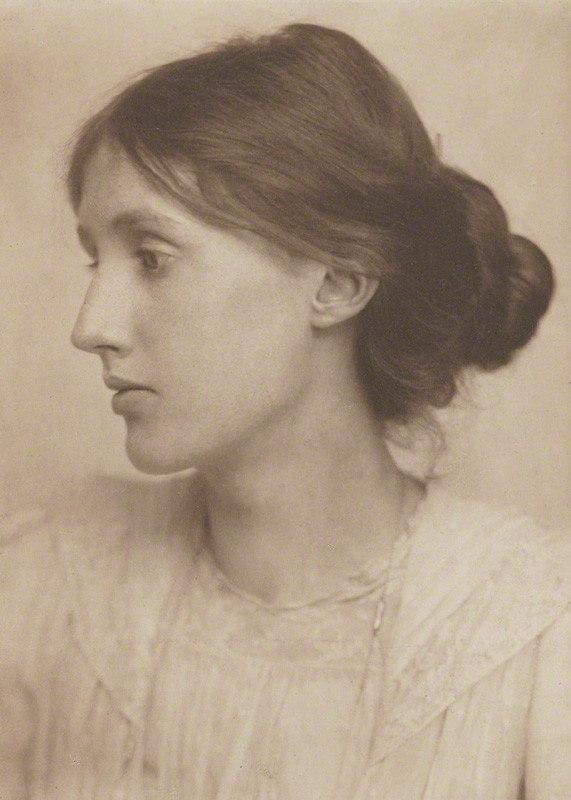
Also noted in the annual report for 1938 is the renaming of the Women’s Service Library to Millicent Fawcett Library (London & National Society for Women’s Service, Annual Report 1938 p. 13).
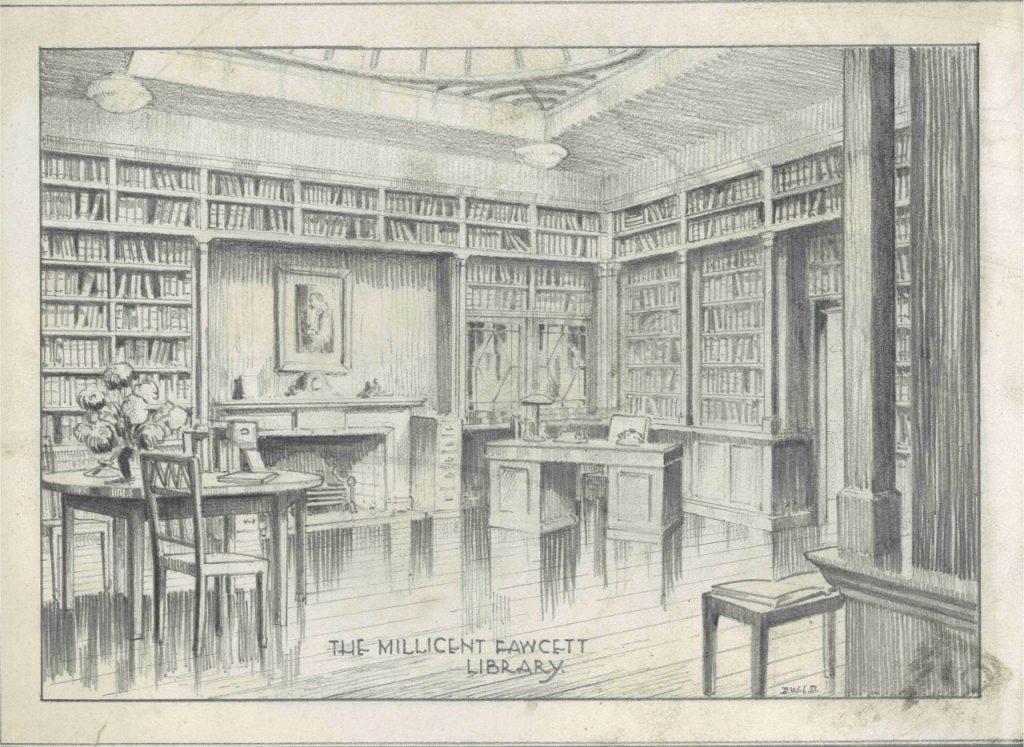
Many important book collections were deposited in the 1930s, as well as archives, the first being the archive of Millicent Garrett Fawcett. With the Second World War and the bombing of Women’s Service House in 1940, the Library, now containing over 10,000 items, was rescued and moved to various locations in Oxford. It returned to London nine years later, but the collection was scattered with most held at Westminster Public Library in Great Smith Street.
In the 1950s, the London Society changed its name to the Fawcett Society, which is still active today. and the library became the Fawcett Library in memory of Millicent Garrett Fawcett. New premises were secured at 27 Wilfred Street, Westminster. Here’s Elisabeth Scott’s design for Fawcett House:
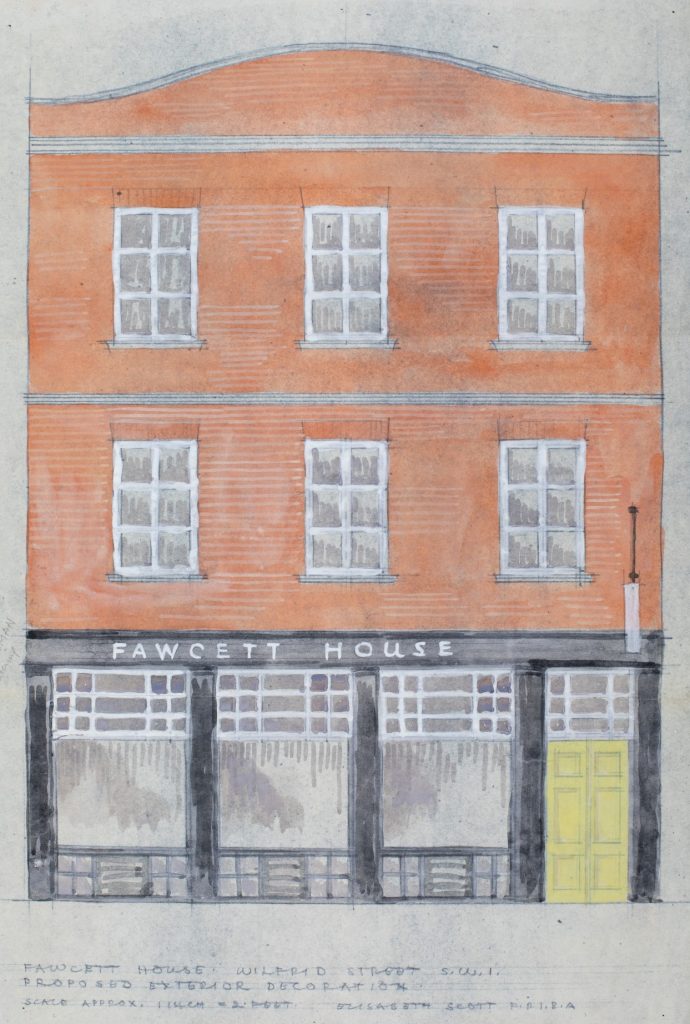
A period of expansion followed. The Josephine Butler Society transferred its library and archive on prostitution and trafficking and women’s societies regrouped or closed in the days before the women’s liberation movement, and their archives were given to the Library.
In 1967, Vera Douie retired as librarian. During her 41 years at the Library, she had developed it from a few bookcases for the use of members into a major research collection. Although there were honorary librarians (Jane Norton) and later full- and part-time librarians who contributed to this expansion, the main credit must go to Vera. This portrait was painted by Madeleine Anderson in the year of Vera’s retirement.
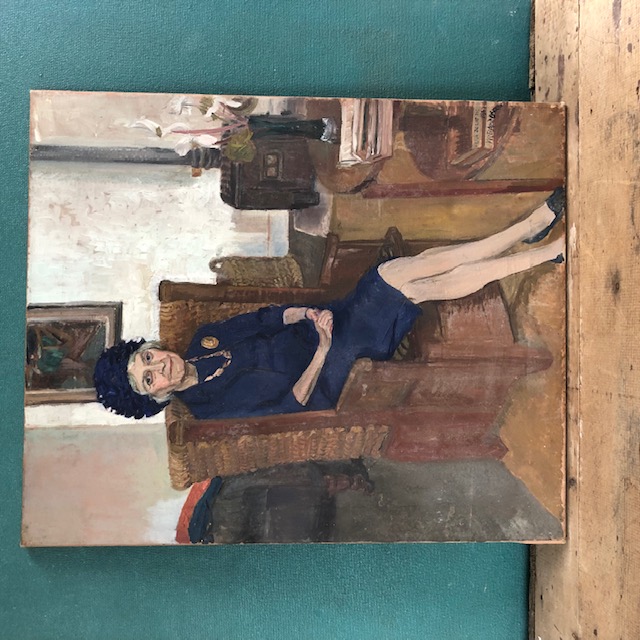
The 1970s brought financial worries, and despite all efforts, a new home was sought for the Library. In 1977, it moved to the City of London Polytechnic in Old Castle Street, East London, under the care of Rita Pankhurst, chief librarian and daughter-in-law of Sylvia Pankhurst.
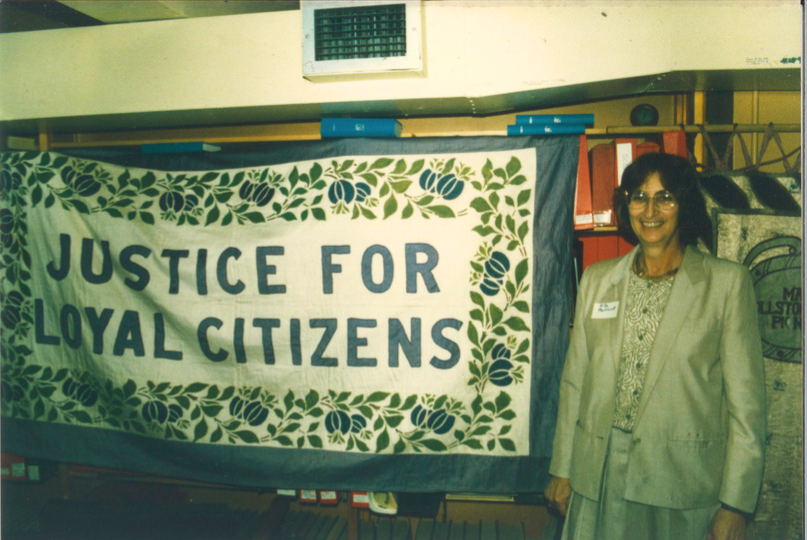
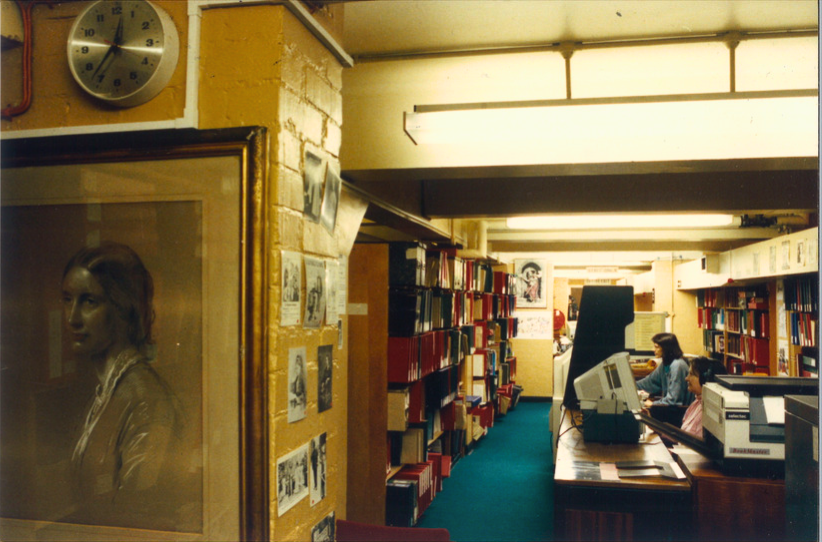
The 1980s saw another period of expansion for the Library. The archive of the suffragette Emily Wilding Davison was deposited, as were the archives of the Six Point Group (a small but important pressure group from the 1930s to 1980s), the Women’s Employment Federation, and the papers of Helena Normanton, the first female student at the Bar, to name a few.
Space became an issue. Following a successful Heritage Lottery Fund grant, the Library acquired a new home on Old Castle Street and a new name, The Women’s Library, in 2002.
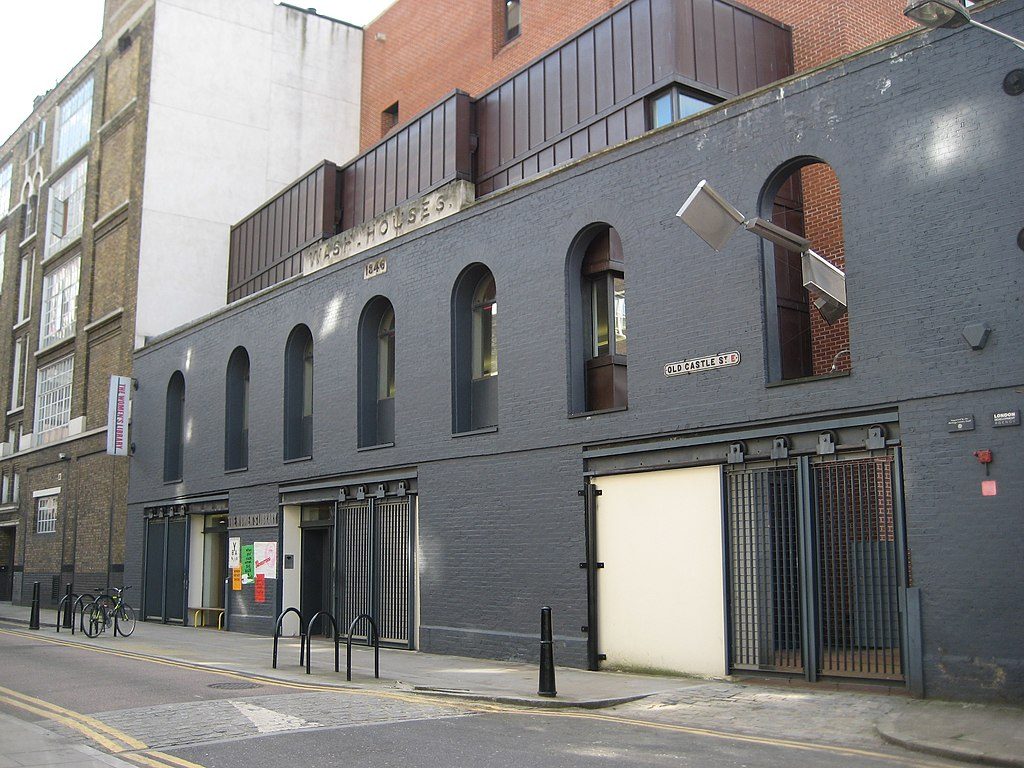
A decade later, the library was yet again plagued with financial problems and, after a successful bid, it moved to LSE in 2013 where it is open to all who wish to use the collections.
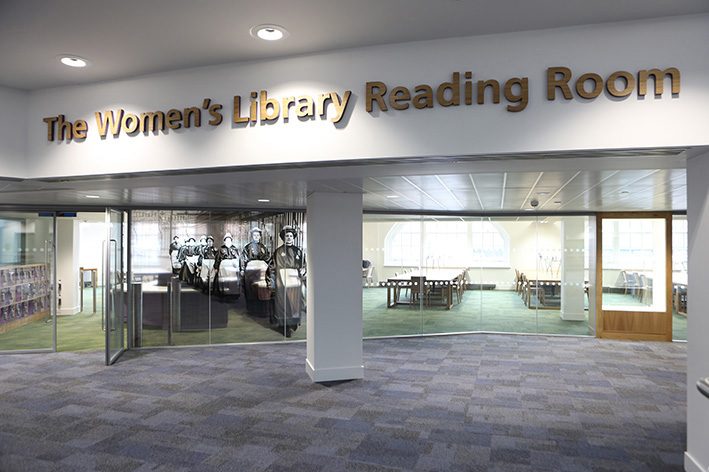
Find out more about history of The Women’s Library
The Fawcett Library: Britain’s Major Research Resource on Women Past and Present, Special Issue, Women’s Studies International Forum, 1987, Vol 10 (3), p221-329
Jill Liddington, The Fawcett Saga: remembering the Women’s Library across four decades, History Workshop Journal, 2013, Vol 76 (1), p266-280
Women’s suffrage and women’s service: the history of the London and National Society for Women’s Service by Ray Strachey (1927).
Jane Grant, In the steps of exceptional women (Francis Boutle Publishing, 2016)


